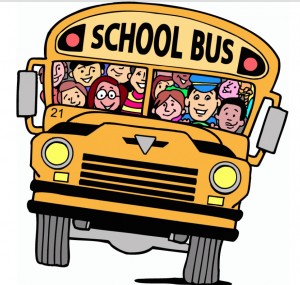Leonid Bershidsky writes: The London newspaper The Independent recently published a sensational story about Finnish plans to abandon subject teaching in public schools. No more math, history and geography as separate lessons, it reported. Instead, students will study topics such as the European Union, picking up language and math skills and knowledge about geography and history as they go along. Even though that’s not exactly what’s happening in Finland, the article took off on social networks. Apparently, adjustments to rigidly compartmentalized learning sound good to a lot of people.
The Finnish curriculum reform scheduled for next year does nothing so exciting as abolishing subjects. It does call on schools to introduce periods in which so called “phenomenon-based” interdisciplinary teaching will be done. In Helsinki, the capital, two such periods will be required during the year, each to last for several weeks. At many other schools, especially in the hinterland, the periods will probably amount to less, because teachers don’t believe in the newfangled methods or don’t understand how to use them.
Revolution is not the Finnish way, tinkering is. And that’s just what the Finns are doing with curriculum. The National Board of Education wondered why students are less satisfied with their school experience and why test results have been sliding: In 2003, Finnish students had the second highest scores of the 65 countries covered by the PISA testing program run by the Organization of Economic Cooperation and Development, but by 2012 they were in 12th place. So the board came up with the idea of bringing the curriculum closer to phenomena that students are likely to encounter in real life. This is a variation on an old idea of John Dewey’s. In 1938, he wrote:
One trouble is that the subject-matter in question was learned in isolation; it was put, as it were, in a water-tight compartment. When the question is asked, then, what has become of it, where has it gone to, the right answer is that it is still there in the special compartment in which it was originally stowed away. If exactly the same conditions recurred as those under which it was acquired, it would also recur and be available. But it was segregated when it was acquired and hence is so disconnected from the rest of experience that it is not available under the actual conditions of life.
This is still true today. As Dewey noted, when we have to re-examine what we learned in school, we often wonder how much unlearning and re-learning we’ve since had to do. I remember my 10 years of Soviet school as a crushingly boring waste of time: Everything I know, I learned elsewhere.
Estonia, Finland’s neighbor, whose PISA scores are on their way up and whose pioneering e-government system Finland is now adopting, teaches schoolchildren how to code, build web pages and applications. Once they have the skills, they will pick up the knowledge they want as they apply them — and this won’t necessarily be the same knowledge that everyone needs to have.
People are more exciting, and their thinking is fresher, when they use similar skill sets to build widely divergent stocks of knowledge. That’s not something the new Finnish system is going to promote.
Perhaps the best aspect of the Finnish system is the freedom its schools have to form their own curricula within a loose national framework, and the freedom students have to determine how they want to learn. Experimentation can help develop alternatives to the traditional learning system we all remember, and don’t really want it for our kids.

